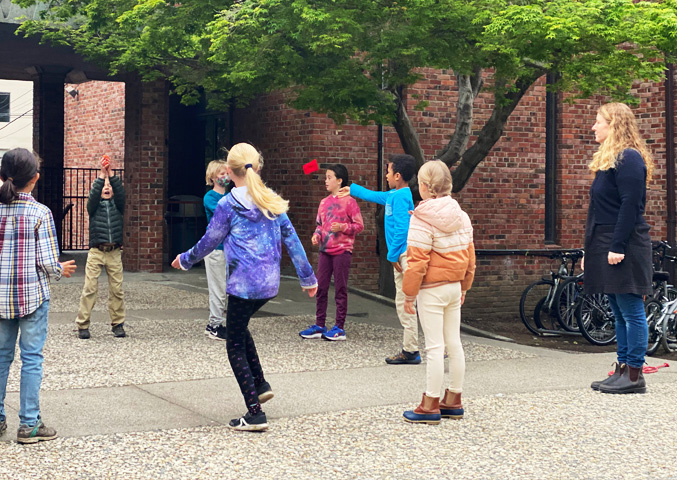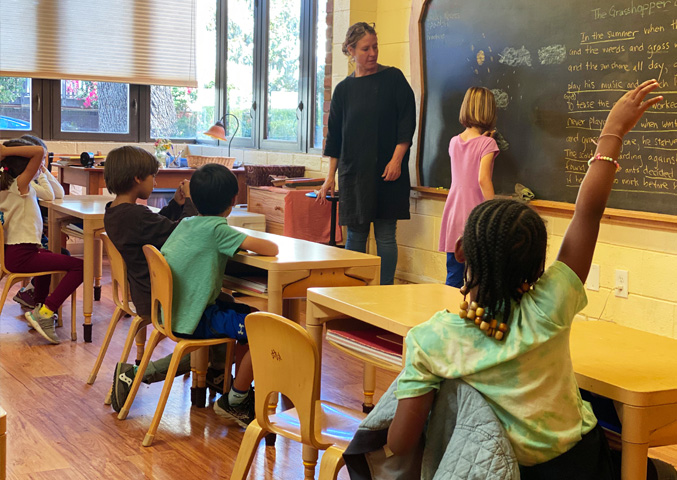Connecting with My Students
by Sydney Borstel, Grade 4 Teacher
||| The earliest connection to a student begins when a teacher visits a student at their home even before school begins. Making a school and home connection, in early childhood and the lower grades, is the first step in establishing the relationship with the child, the parents and the entire family. Seeing them on their own turf, in what is their most comfortable place, is very important for the teacher’s understanding of their students. Plus, having your teacher visit you at home is tremendously memorable for a young child!
To build upon this connection, each morning before a child even enters the classroom, I get a chance to gauge how my students are when we shake hands and look each other in the eye. That one-on-one connection provides an insight into each child’s temperament, mood and frame of mind for the day ahead. And, oftentimes, Waldorf teachers have to adjust accordingly.
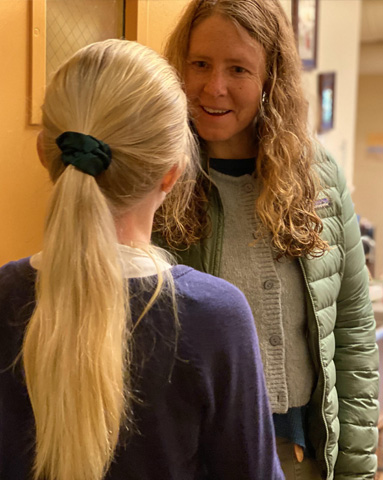
In First and Second grade, teachers teach, in part, by telling pedagogical stories to meet the students where they are emotionally and developmentally. As a teacher, I find it magical to see what, in the story, stood out for them and resonated within them. Perhaps they connected with the sad character who was crying behind a rock, or the sword fight in the next scene. A child in my class delighted in the Norse myths when she heard about the squirrel who runs up and down the World Tree, passing insults from the Serpent to the Eagle, spreading gossip and making mischief. And that really reflected the mischievousness in her right now! What resonates with each child is a mirror of an aspect of their character or something about the stage they are passing through.
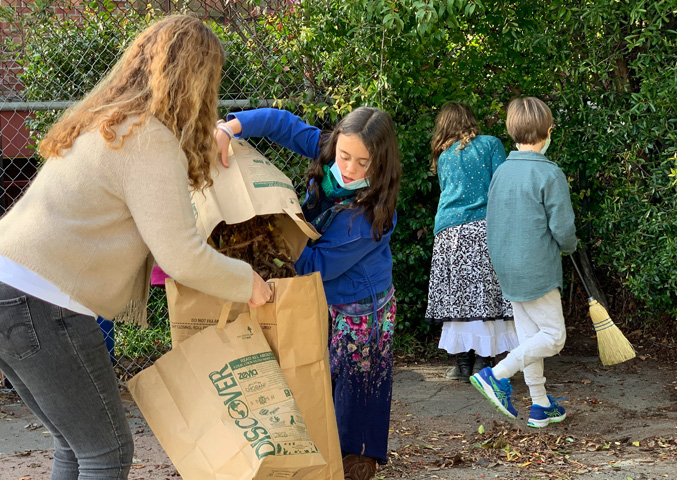
Sometimes a teacher will invent a story to remedy a situation. I used one about a sneaky gnome who was playing tricks by putting things in the wrong desks, to resolve a small stealing issue that was happening in class. This led to a graceful return of the missing items, and a student who was able to save face by pointing out that the gnome had put things in all the wrong places. Because students form images from the story, its impact is much more effective and leaves a longer lasting impression than just reasoning with them.
In fourth grade, which I am teaching now, the students are old enough to have classroom meetings or councils which I embed into my class each day. We take as much time as necessary at the beginning of the day to do check-ins, and review the agreements of our class, which we invented together. Our classroom agreements are to: be responsible, be respectful, and make good decisions. It is clearly understood within our class that mistakes are common and that they are valuable opportunities to learn. In these daily circles, it’s a beautiful opportunity to know where each person is at emotionally plus, it’s been amazing to witness these young children share, open up and become vulnerable in a few short weeks. Their confidence and bravery is heartening.
For instance, someone might share that they are just ‘mad’ for no reason, or had a fight at home – which then gives the class an opportunity to be a little bit kinder, to give that person a bit of space, and not take their unwillingness to engage with us personally. We are learning and exercising empathy on a daily basis. Learning to deal with others in relationship, and using the tools we are learning is providing my students with very real life skills which they will undoubtedly need for the rest of their lives.
These circles also satisfy a need to connect with each other and with me, their teacher. I always go first and model by sharing how I am doing. I used to think that if challenging social dynamics arose in my class, then I was not doing a good job as a teacher. Now I understand that this is life and that challenging situations will and can arise at any time, it’s how we deal with these situations that is of utmost importance.
Recently I noticed that the students were having difficulty settling down during a math class. As a group, they had to work out something that was going on. We ended up devoting a whole period to it. I knew that they were not going to be able to learn and focus on math if they were not feeling seen or heard in their own classroom. It’s worth it to me to do that work – and the benefits to the children are evident.
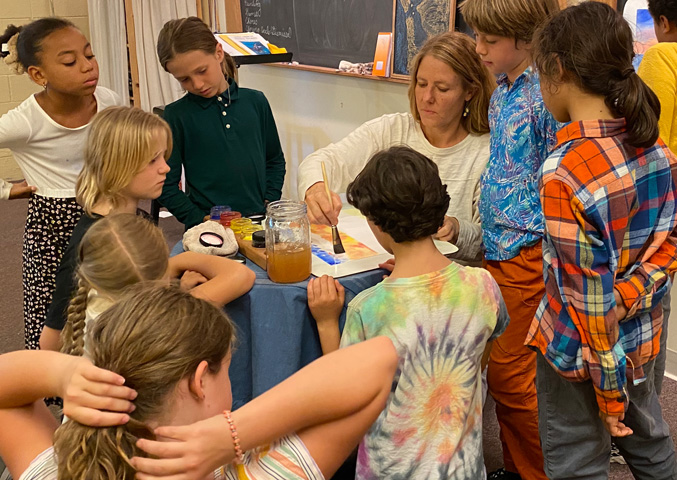
Giving voice to each student, and modeling communication between children to resolve disputes (“I wanted the shovel!” to which “May I have the shovel when you are done?” is modeled) allows the teacher to honor the validity of the feelings of each child, while teaching them how to, eventually, resolve these issues themselves. Being heard and understood by the teacher, and eventually by their peers, brings the opportunity for a lot of trust. There’s safety in being vulnerable if your feelings are going to be respected. You can’t pretend that these conflicts are never going to happen. The classroom is a playing field for life and the characters that you’re going to meet in the world. Together we are normalizing conflict resolution conversations and the healthy processing of these issues.
I have been with most of these children for over three years now, I know them well! This is only the first six weeks of school and this type of work deepens over time. It’s my goal as a teacher to create an environment where they can blossom and where they will thrive as individuals and as a class.
